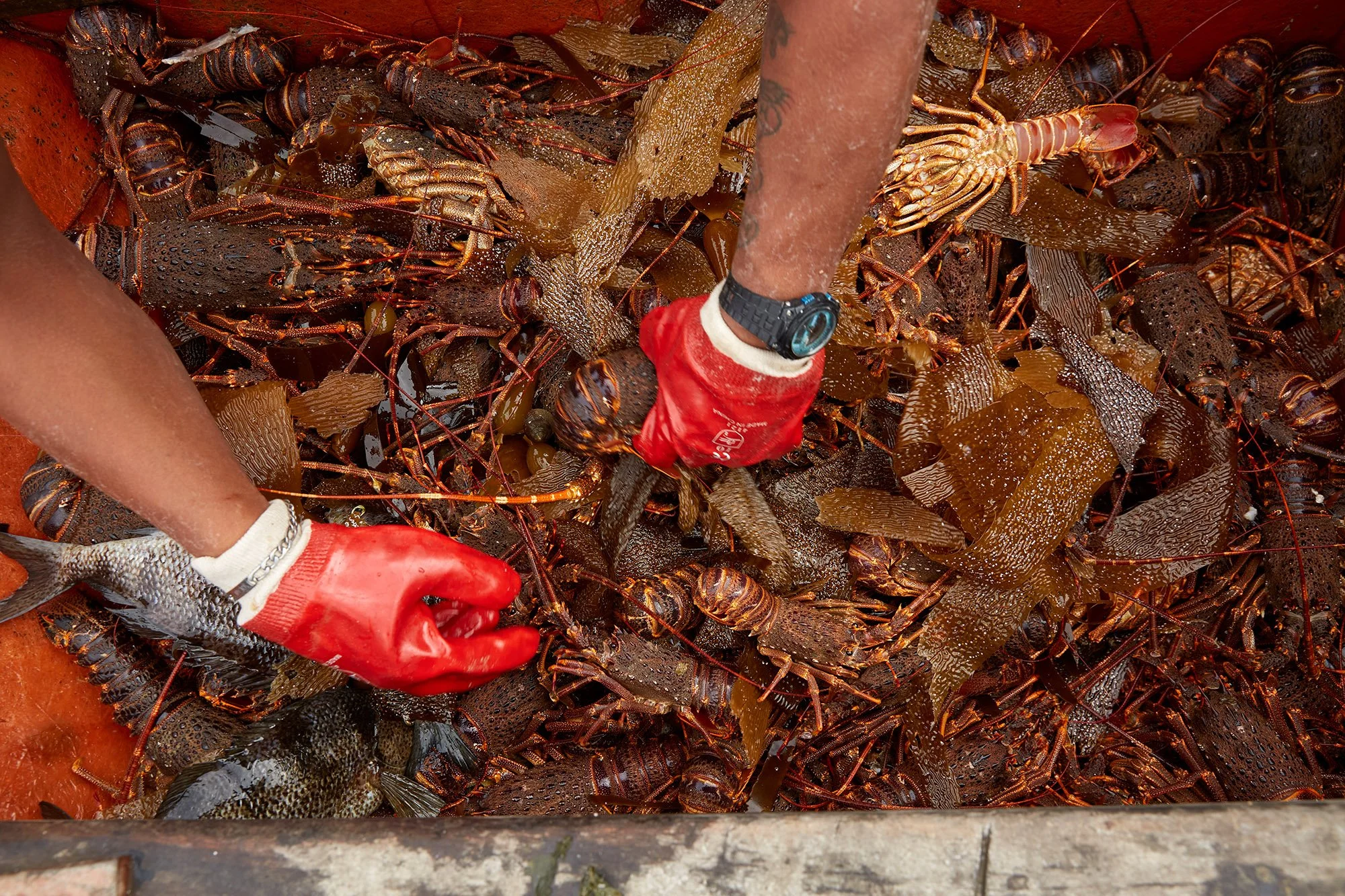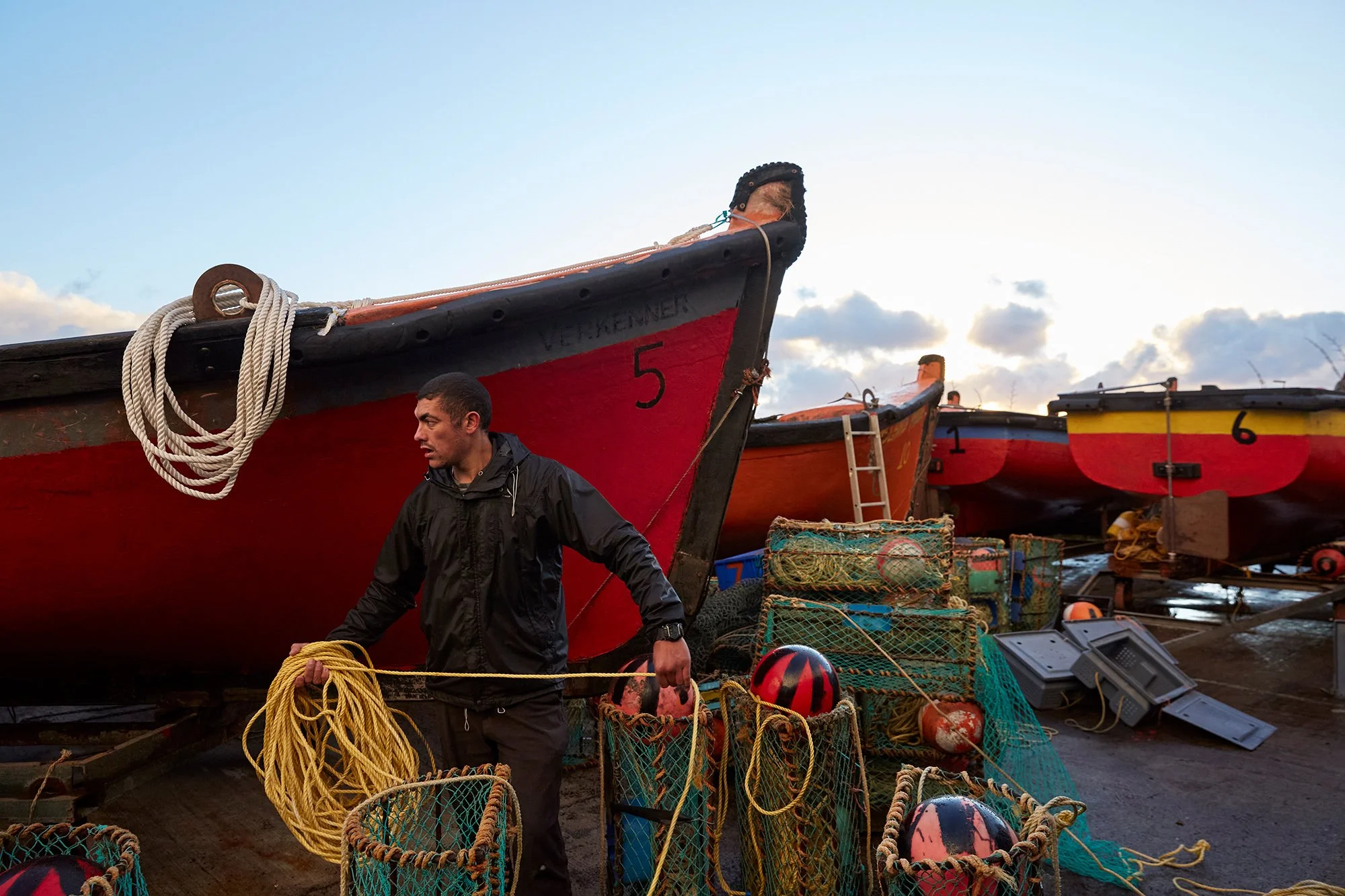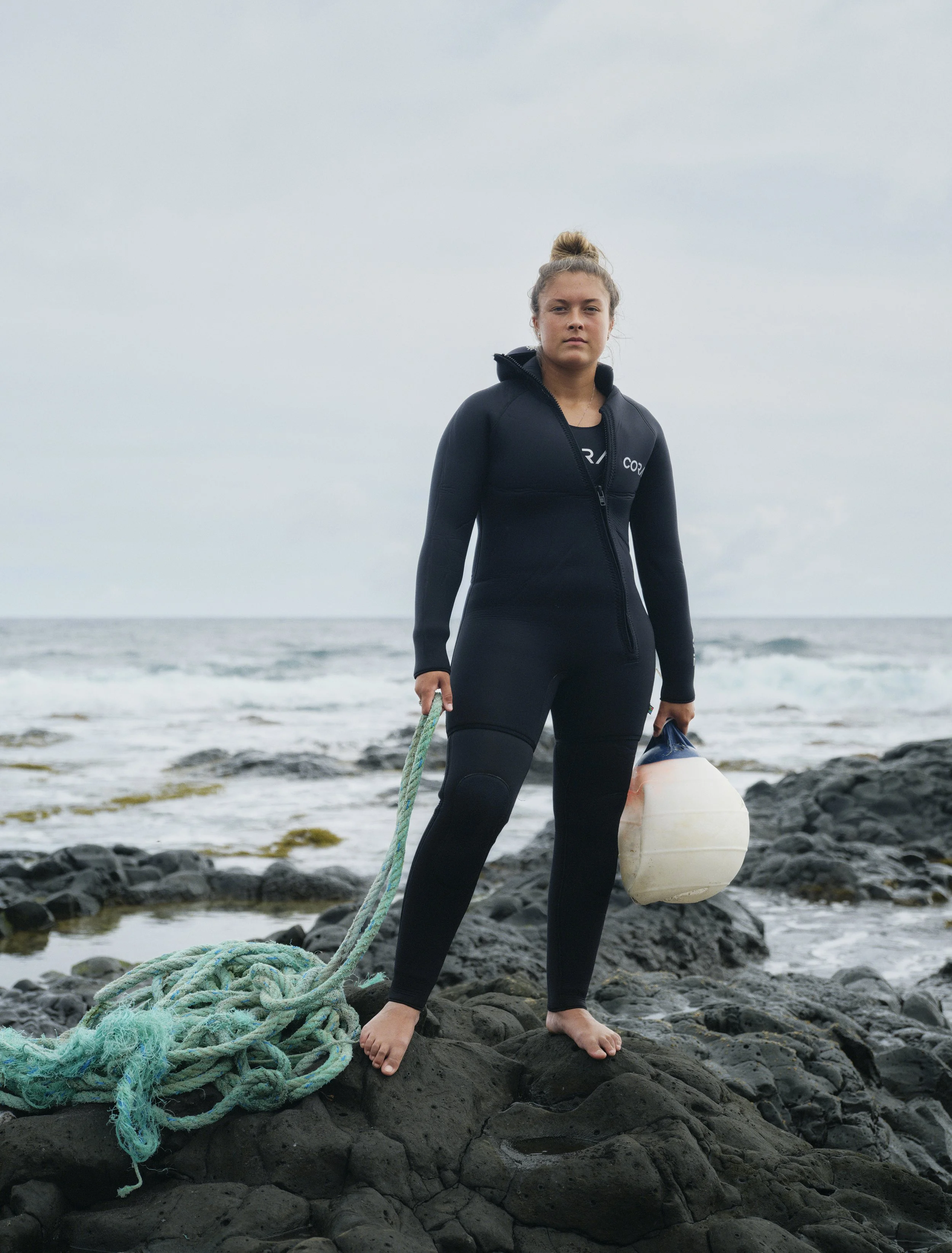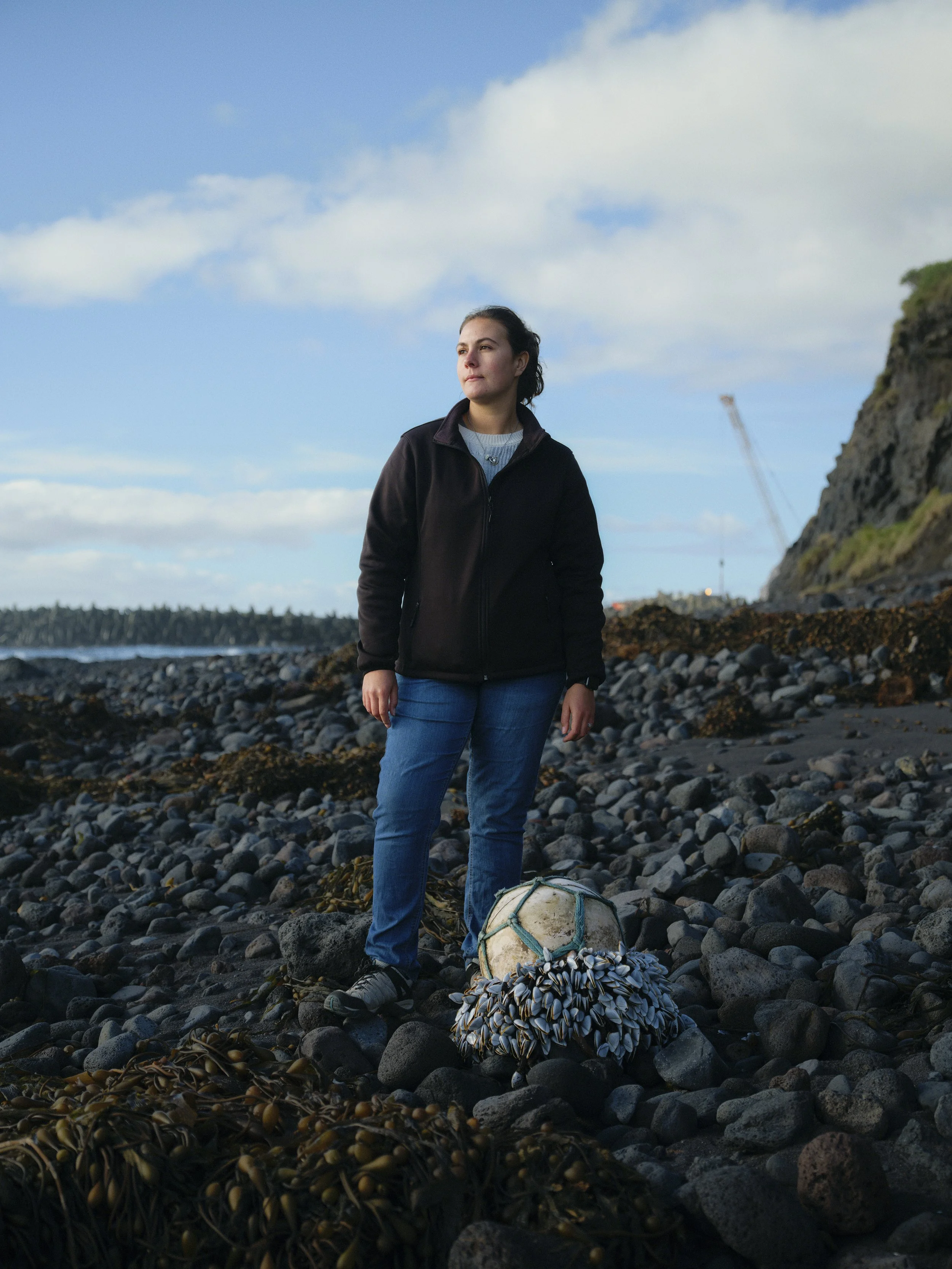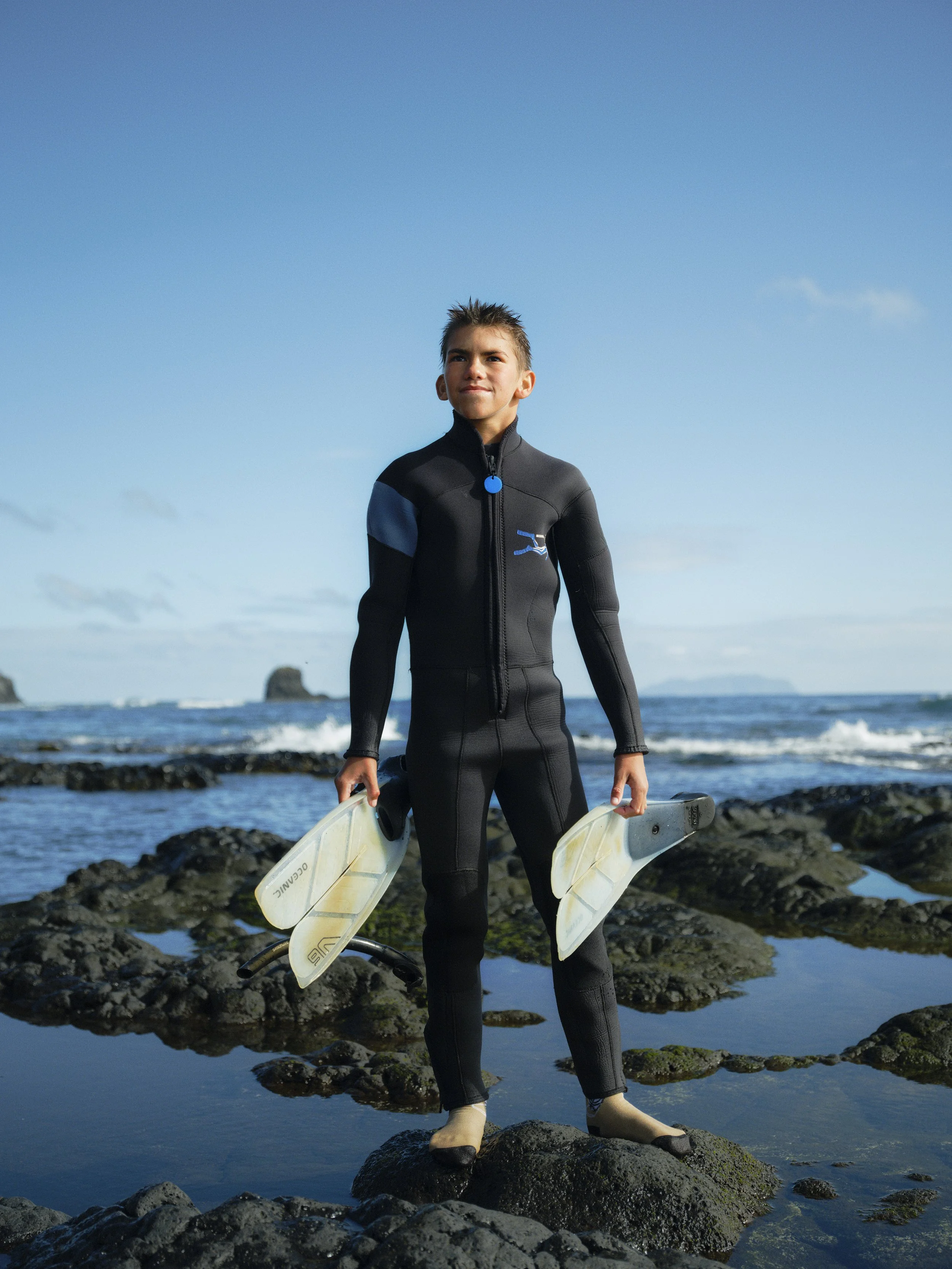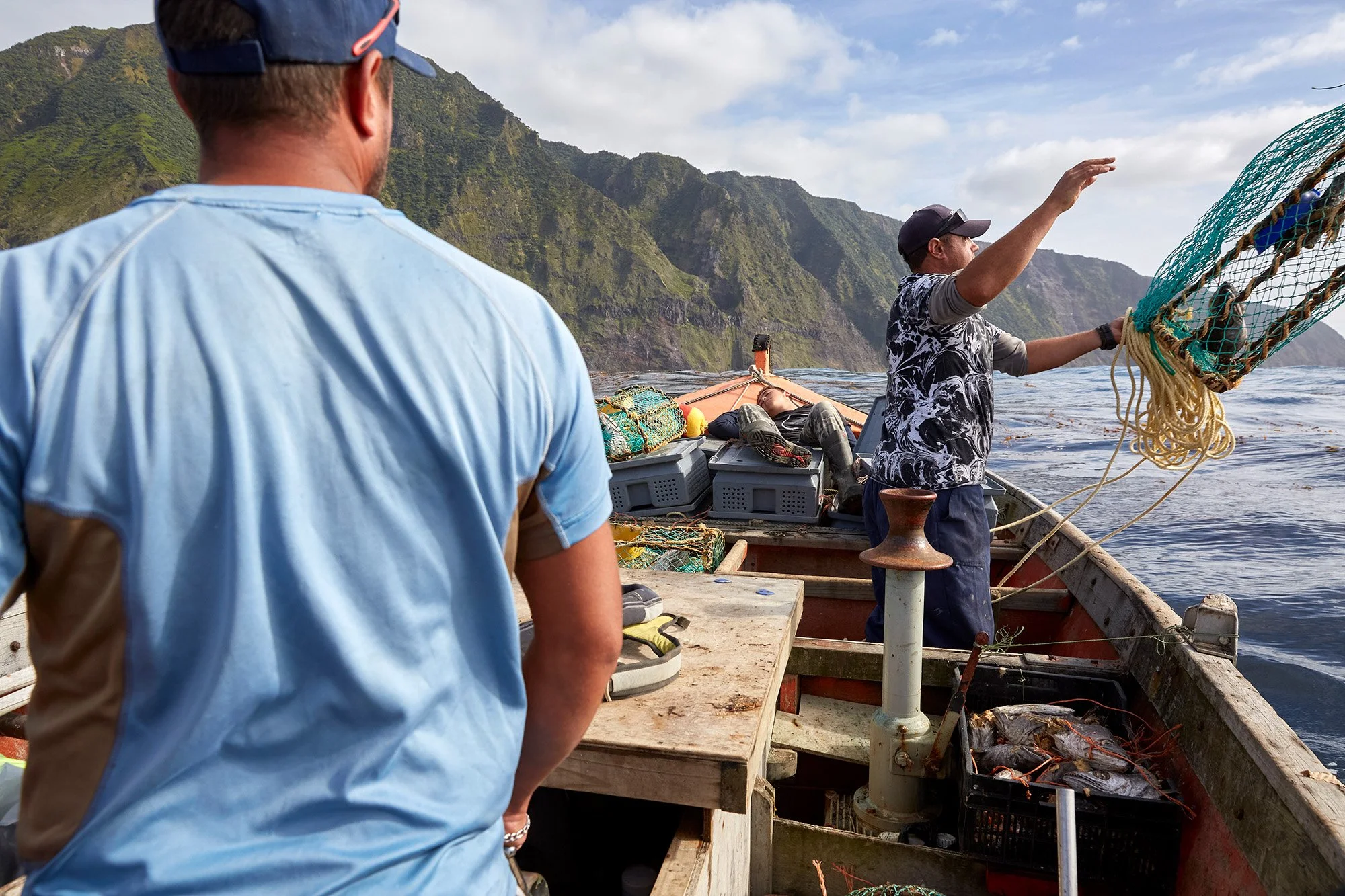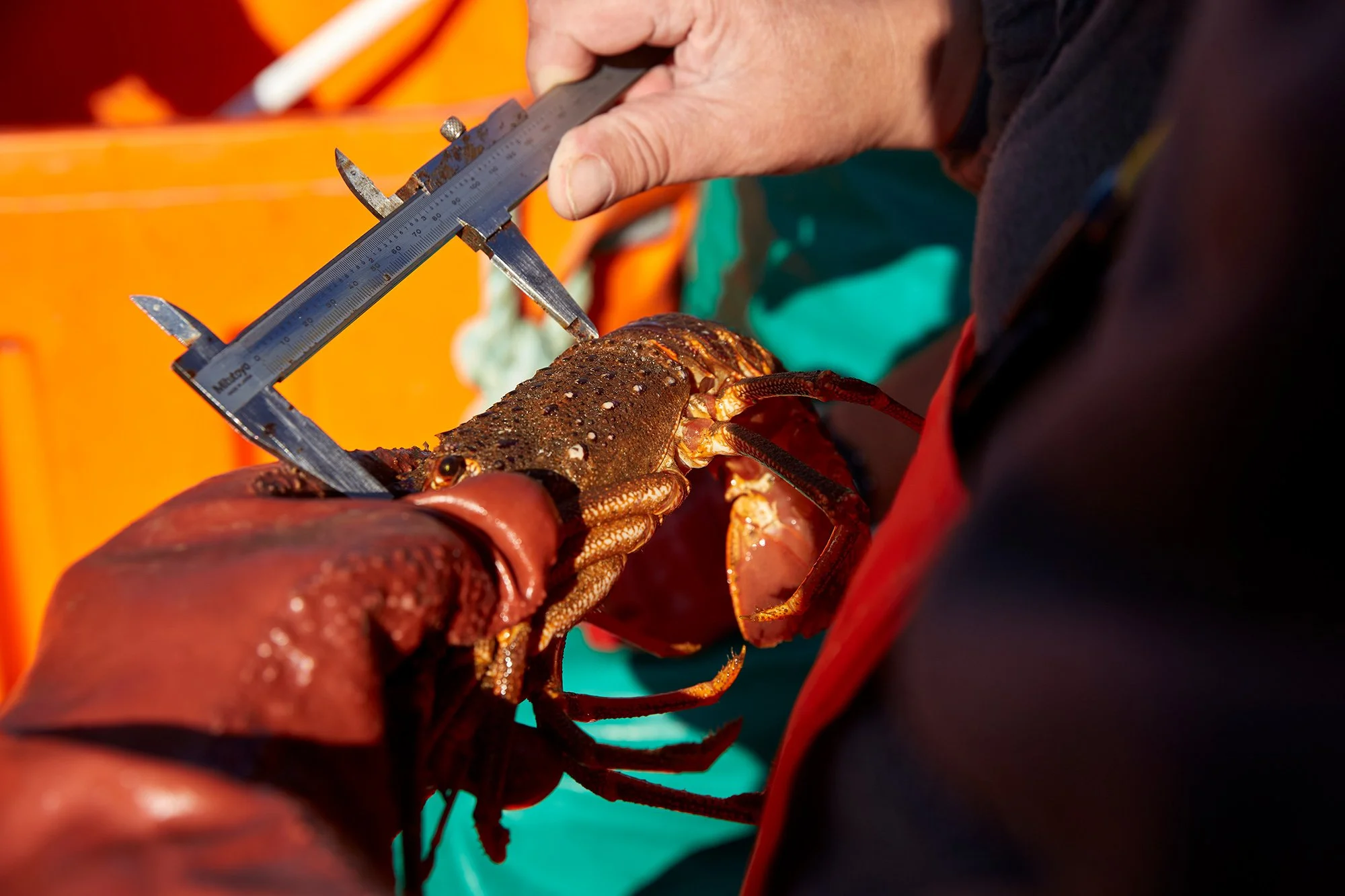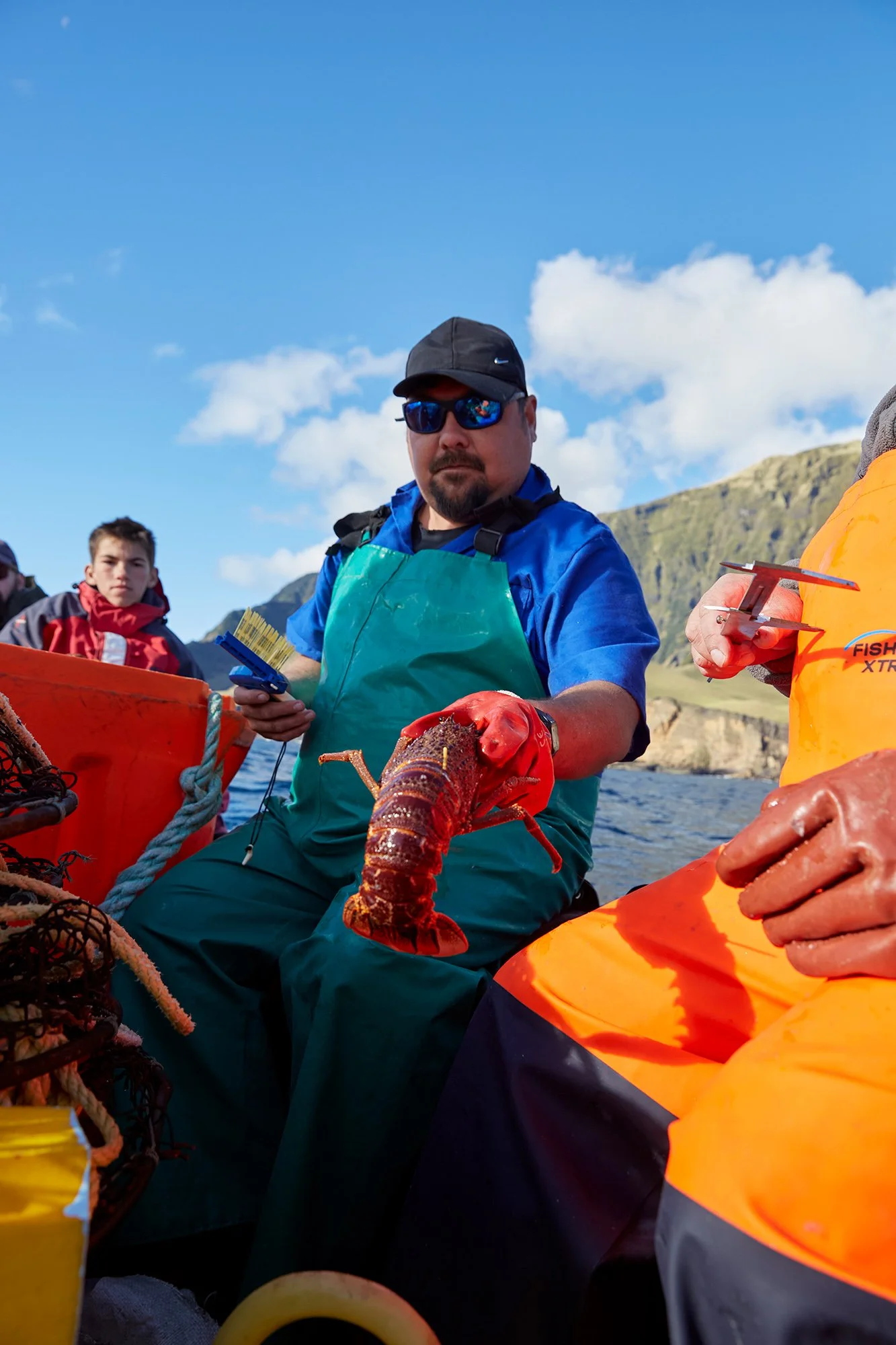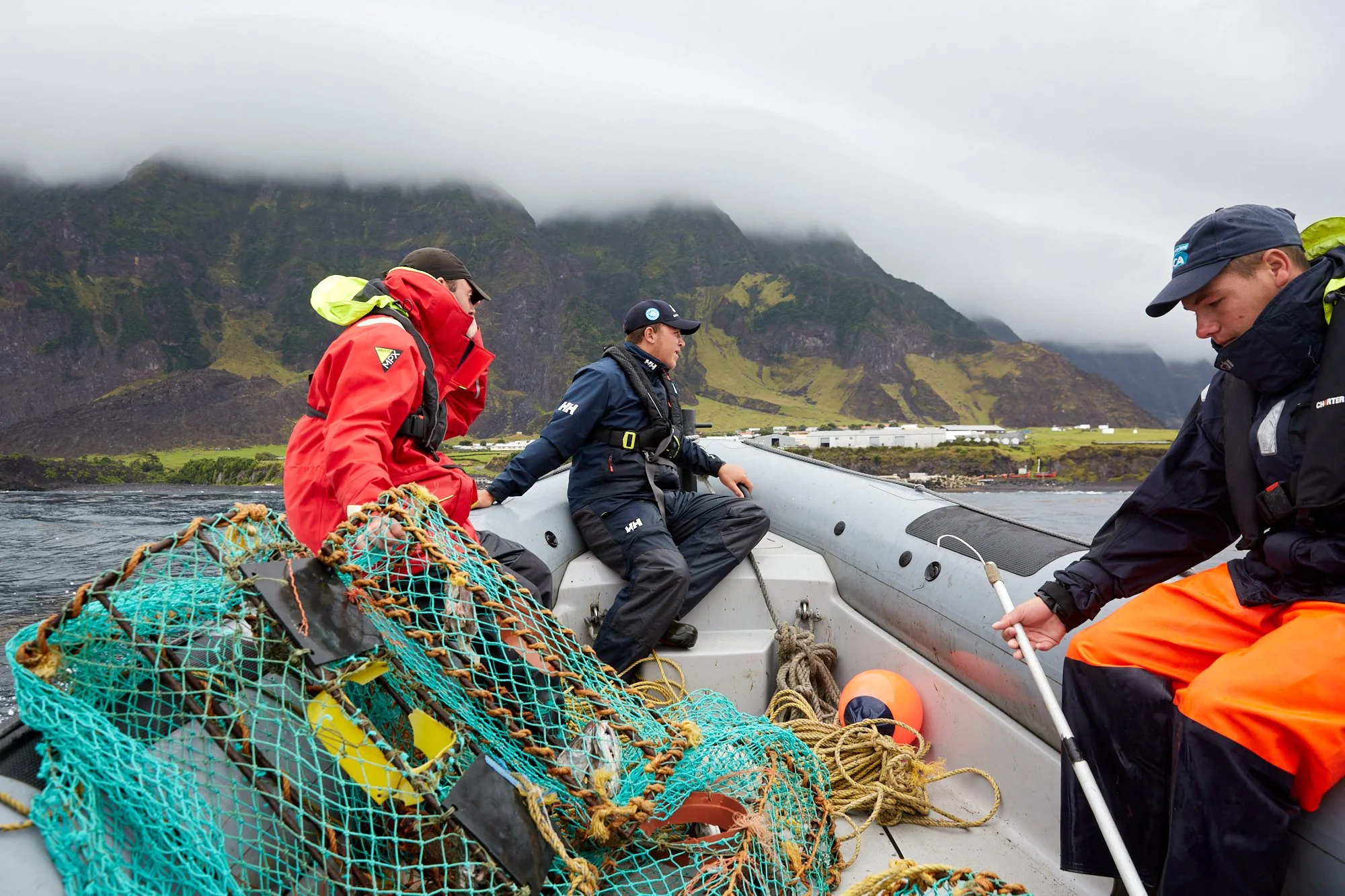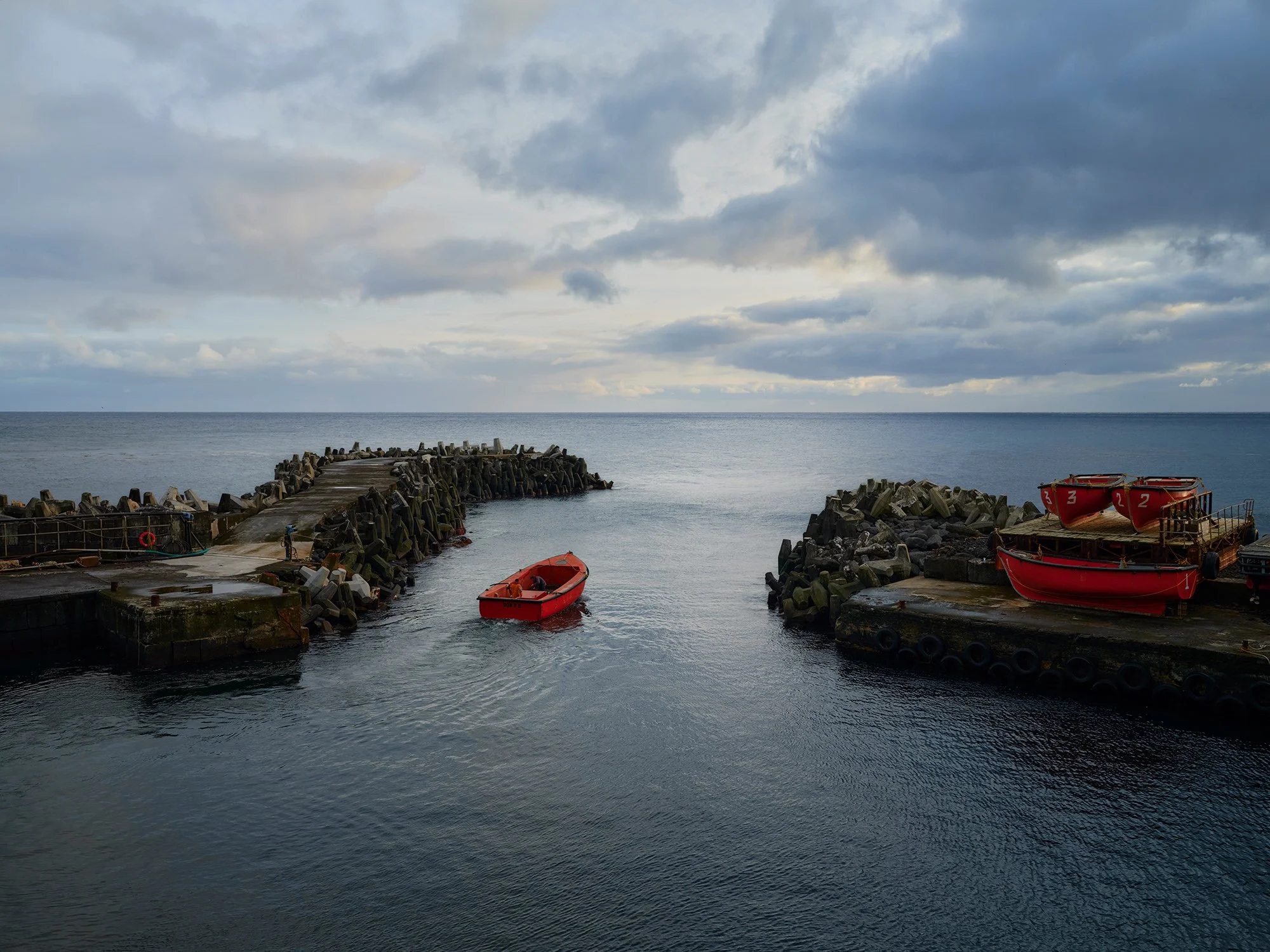
Remote Guardians
This story, published on BBC Future Planet with support from the Pulitzer Center’s Deep Dive Ocean & Fisheries Reporting Grant, explores how the community of Tristan da Cunha — the world’s most remote inhabited island — manages to sustain a commercial lobster fishery inside one of the largest marine protected areas on Earth.
In 2020, Tristan established a Marine Protection Zone of 687,000 sq km. Over 90% of its waters are closed to fishing, while the remaining inshore zone supports a carefully regulated lobster fishery built around Jasus tristani, the Tristan lobster. For the island’s 230 residents, this balance between conservation and survival is essential.
Together with journalist Nick Schönfeld, I spent ten months on the island in 2023/2024 documenting the fishery, the surrounding seascape, and the people whose lives are tied to it. The photographs shown here include images not featured in the original BBC piece. We will return in 2025 for another six months to continue this ongoing project.
Tristan da Cunha’s harbour on the morning of a fishing day.
Fisherman Dean Repetto sorts caught lobster in the basin of the fishing boat.
Fisherman Shane Green prepares fishing ropes on Gear Check Day ahead of the fishing season.
Shannon Swain poses with marine debris that has washed ashore on Tristan da Cunha.
A powerboat from MFV Edinburgh at Capsize Sands, Gough Island.
Janine Lavarello poses with plastic garbage which has washed up on the beach, close to her remote island’s harbour.
An Atlantic Yellow-nosed Albatross (Thalassarche Chlororhynchos) tends to its chick at First Pond on Nightingale Island.
Connor Glass-Green stands on the edge of a rockpool at Runaway Beach during a diving lesson.
Christiaan Gerber stands on Inaccessible Island, one of the most remote and protected landmasses on Earth, and part of the Tristan da Cunha archipelago.
Fisherman Dean Repetto watches as his partner Jason Green throws a lobster trap into the water.
Fisherman Jason Green sorts caught lobster into crates.
Rodney Green, Deputy Head of Tristan da Cunha’s Department of Fisheries, throws a buoy overboard to mark the location of a trap during a lobster tagging operation.
A Tristan rock lobster (Jasus tristani) is measured and tagged before being released back into the water.
Rodney Green holds a tagged Tristan rock lobster (Jasus tristani) after it has been measured.
Jessie Joyce Hagan stands outside the Tristan da Cunha lobster processing plant just minutes before beginning her shift.
Conservation team returns to Tristan's harbor.
Eugene Repetto (left) and Nathan Swain (right) return after setting lobster traps.
Tristan da Cunha’s harbor on the morning of a fishing day.


